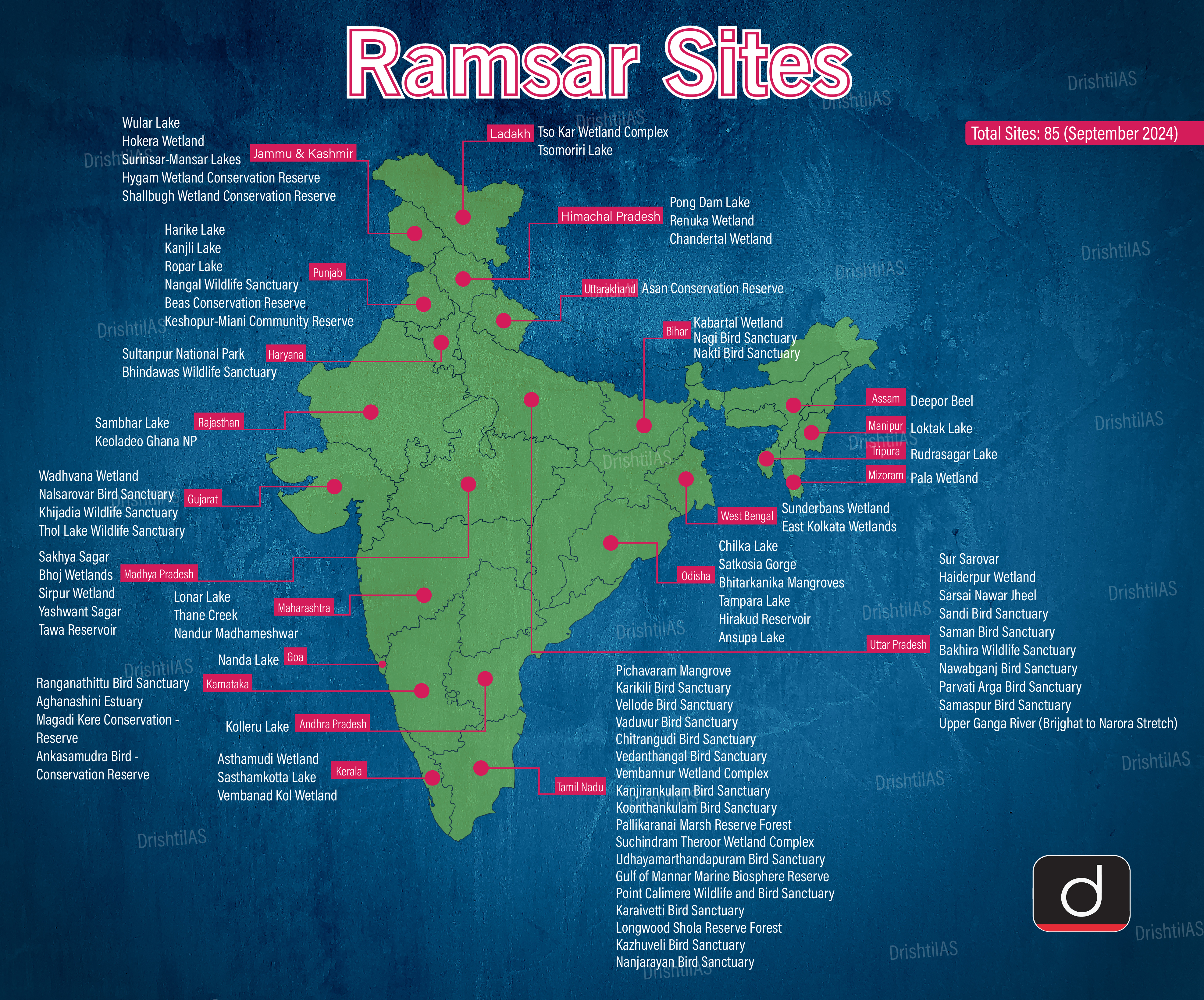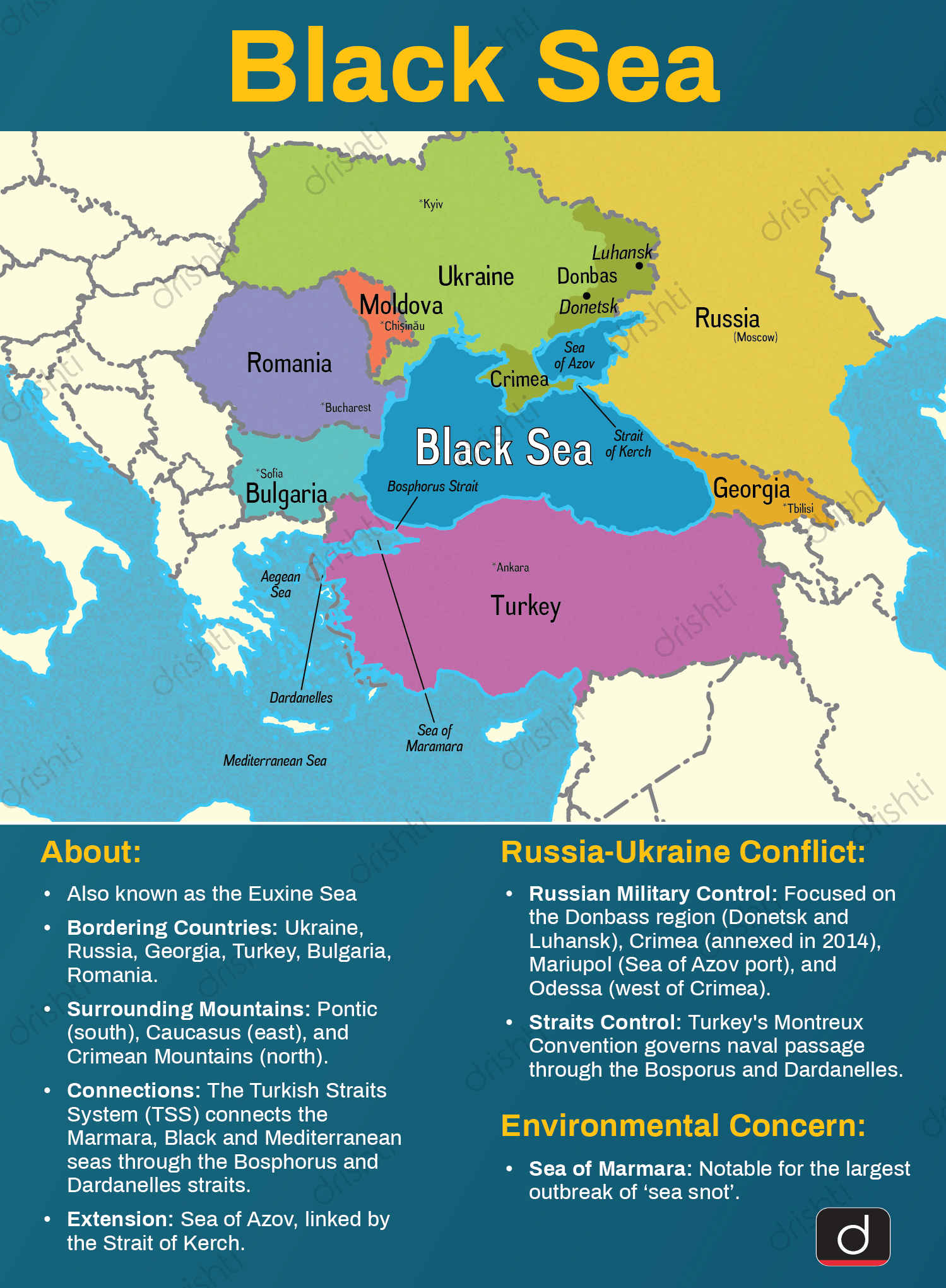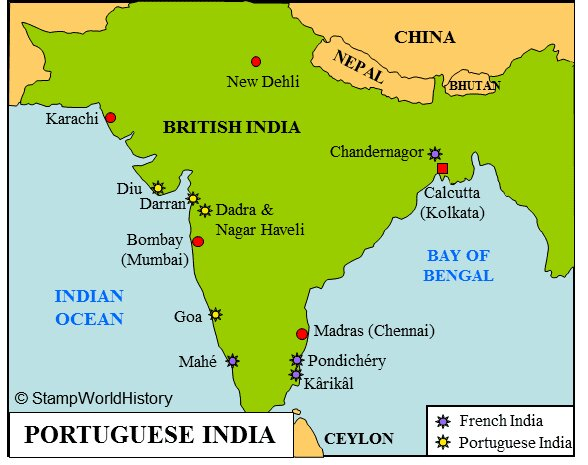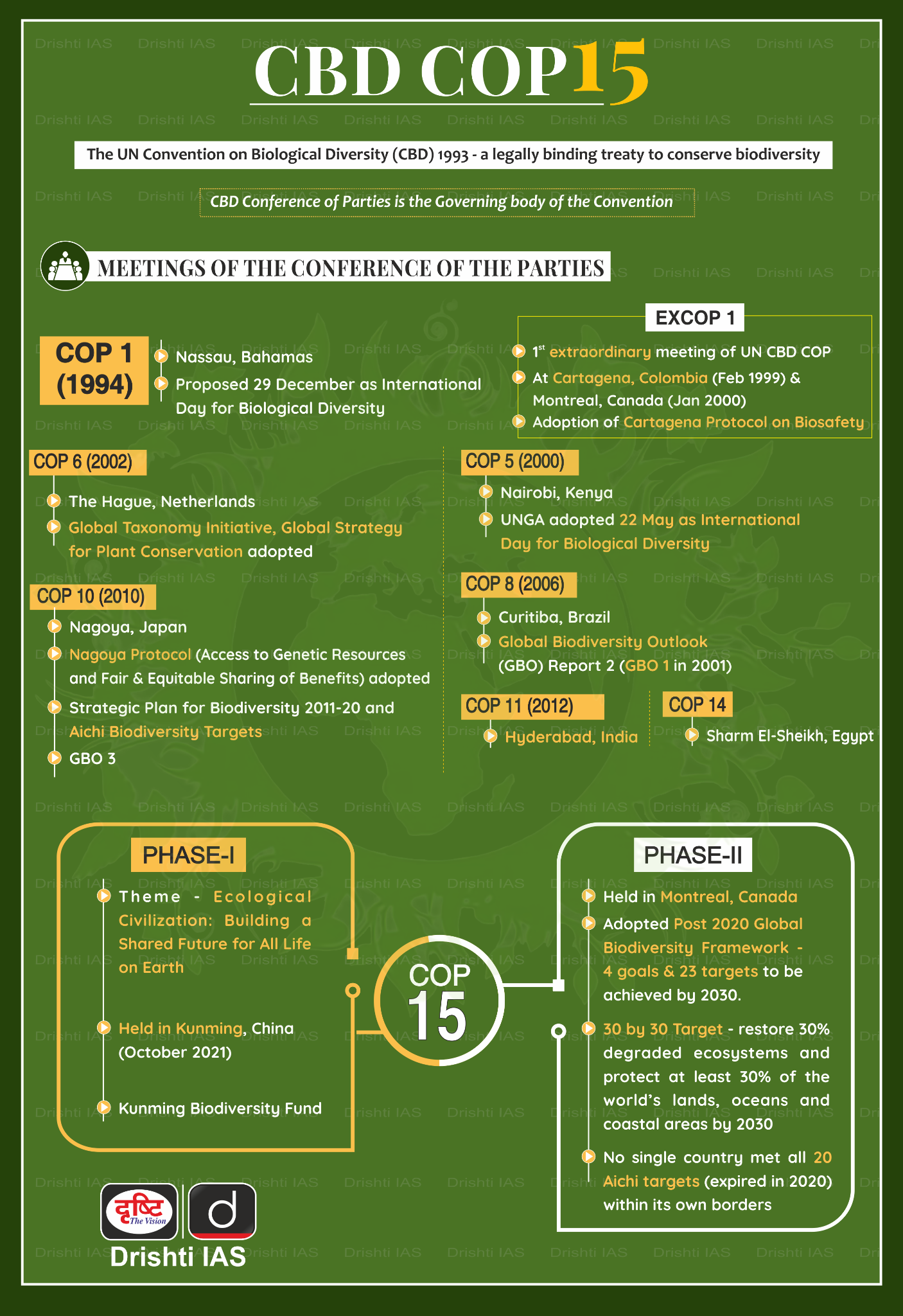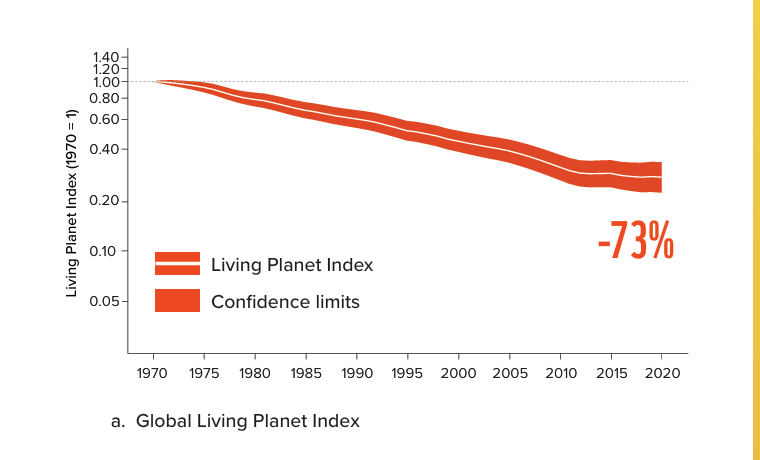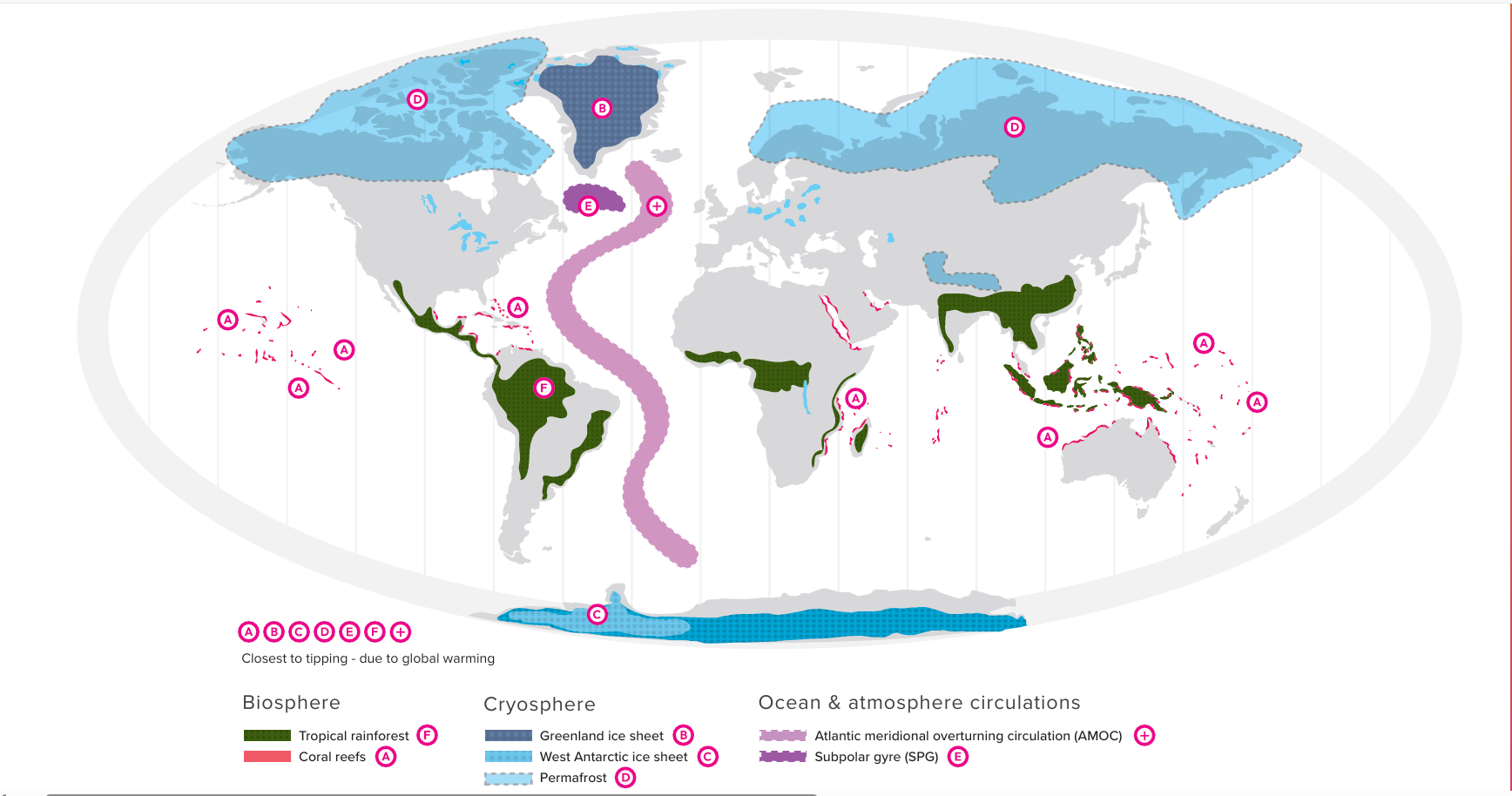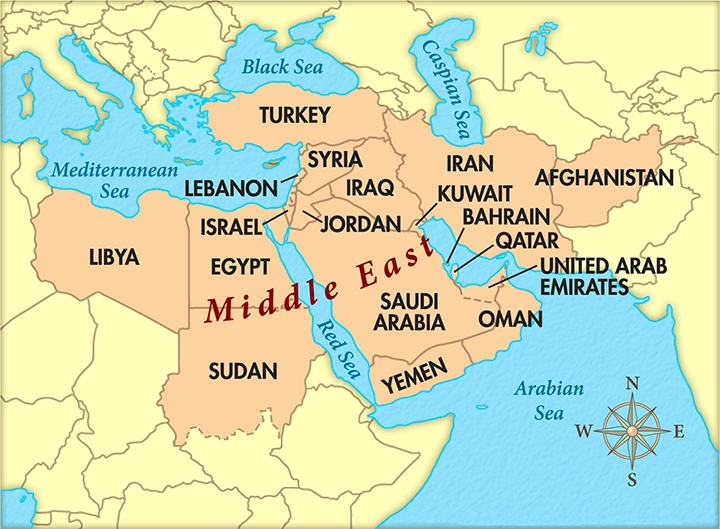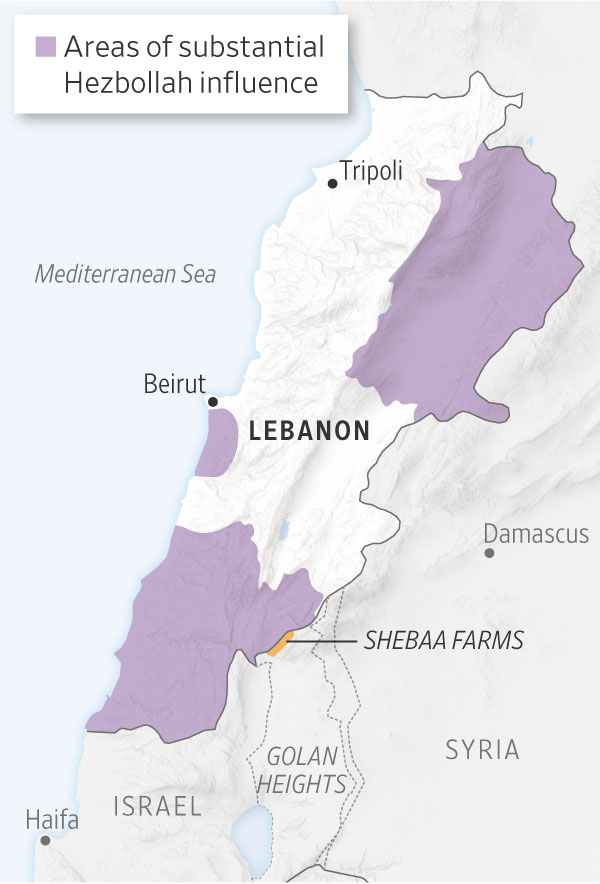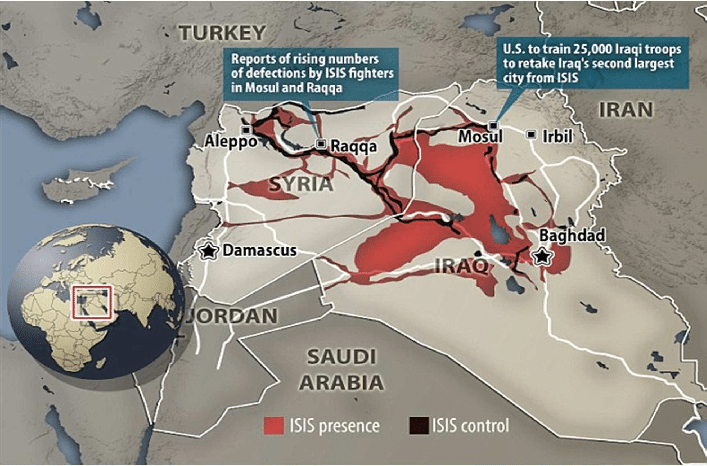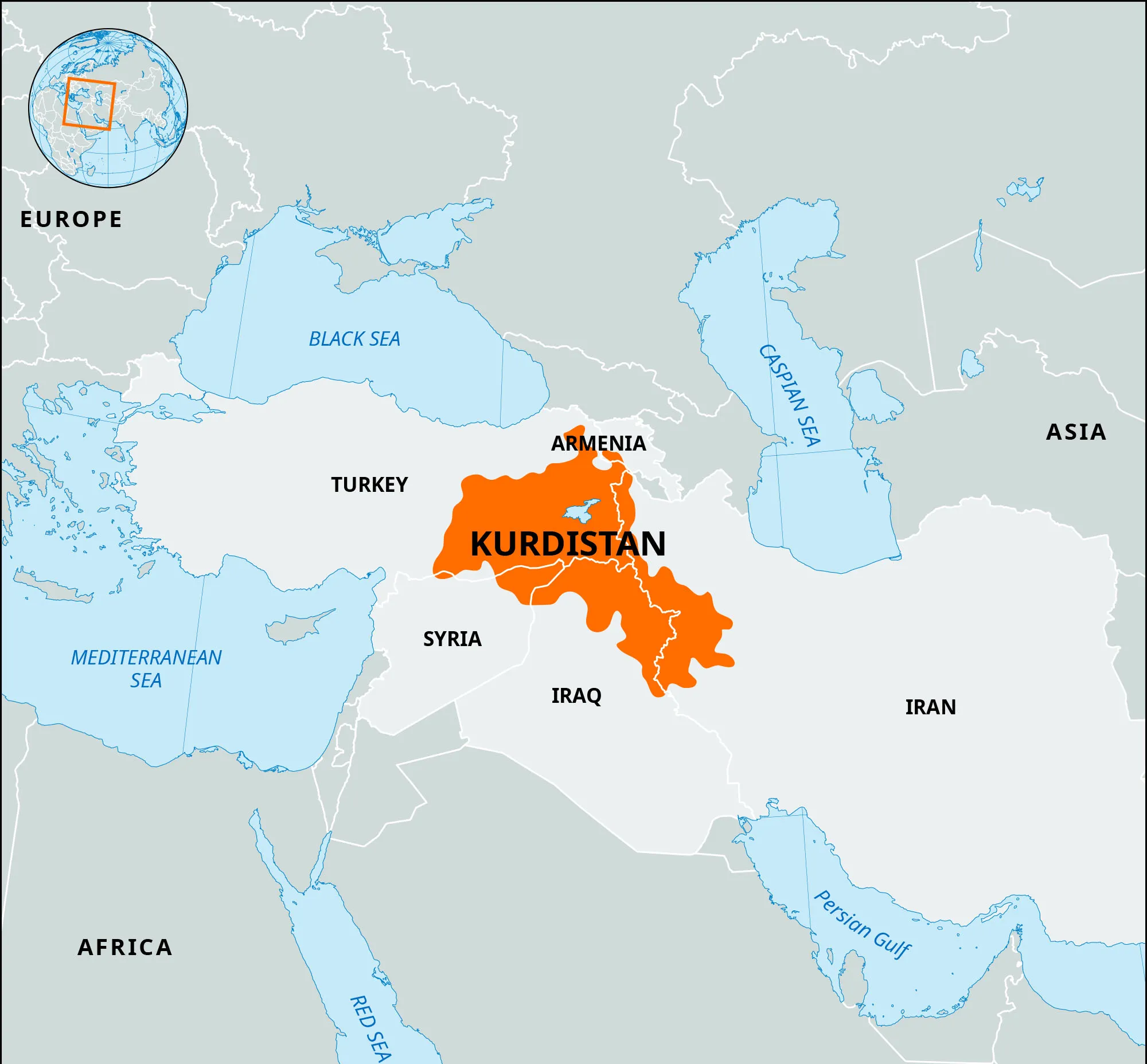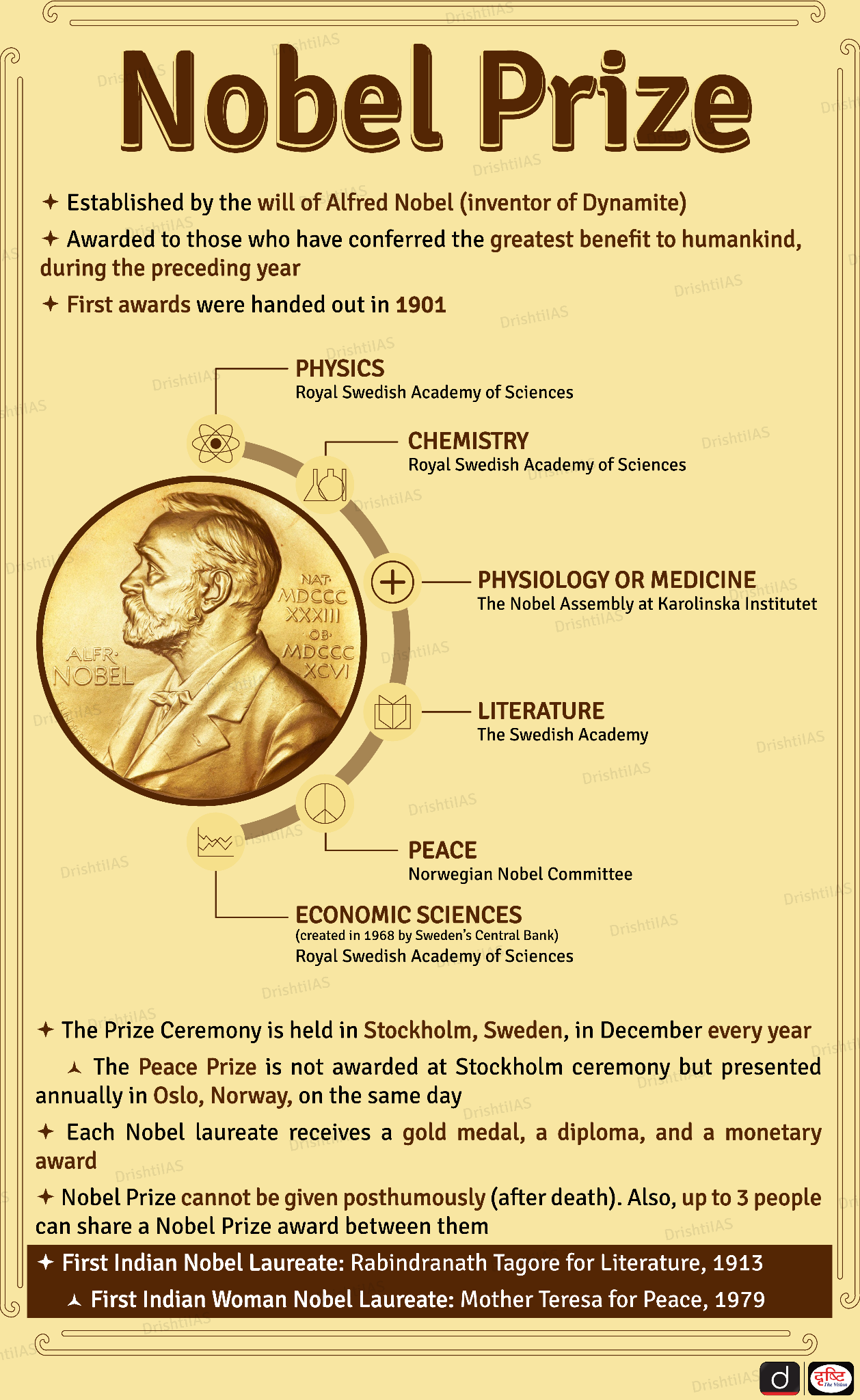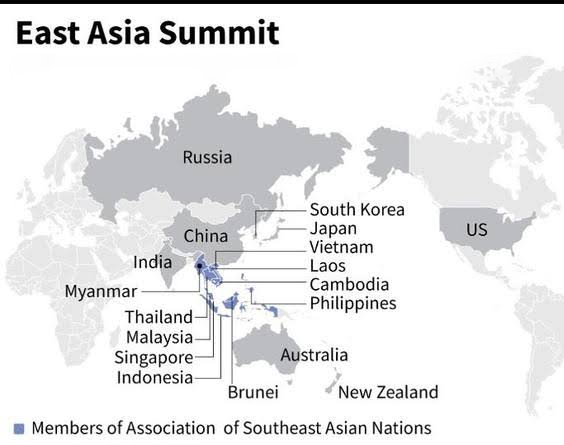Maps
Maps
Indian History
Merger of French and Portuguese Territories
For Prelims: French and Portuguese Territories, Brazzaville Conference, French Congo, Africa, Article 27, Goa, Salazar, North Atlantic Treaty Organisation (NATO), Tristão de Bragança Cunha, Operation Vijay, Azad Gomantak Dal (AGD), Students Congress of French India, French Indian National Congress.
For Mains: Contrasting approaches of the French and Portuguese colonial powers in retaining their Indian territories after India's independence.
Why in News?
On 1st November 1954, the French possessions in India were transferred to the Indian Union and Puducherry became a Union Territory.
- On 19th December, India will celebrate Goa Liberation Day to commemorate the state's liberation from Portuguese rule in 1961.
- With prolonged negotiations, nationalist movements and military action, India succeeded in integration of French and Portuguese territories in India.
Why France Insisted on Retaining its Colonies in India?
- Post- World War II Reconstruction: The French government believed that the empire would help revitalise the nation's post-war reconstruction using colonial resources and strengthening its global influence.
- Brazzaville Conference (1944): The Brazzaville Conference held in 1944 in French Congo led to the concept of the French Union.
- It would integrate colonies more directly into the French political system, allowing them to remain part of France under a redefined relationship.
- Democratic Rights: Article 27 of the constitution of the French Union offered its colonies the choice to either stay with France or become independent.
- France was portrayed as a liberal and progressive colonial power which was used to prolong its hold over its colonies.
- Cultural and Linguistic Influence: Many residents in French India spoke French, not English, and felt culturally aligned with France rather than the new, English-speaking independent India.
- Strategic and Political Calculations: For the French government, whatever happened in India was to have its repercussions in their other colonies in Indochina and Africa. Consequently, their motive was to prolong the process of negotiation as much as possible.
Note:
In India, French colonies comprised Pondicherry, Mahe, Chandernagore, Karaikal, and Yanon (Yanam).
Why Portugal Insisted on Retaining its Colonies in India?
- Historical Claim: Portugal emphasised its centuries-long presence in Goa, having ruled the territory since the early 16th century unlike more recently established British or French colonies.
- Goans substantially were voting for their representatives in the Portuguese Parliament from the 19th century.
- Salazar’s Dictatorial Stance: Portuguese dictator Salazar viewed Portugal’s colonies not as temporary possessions but as integral parts of the Portuguese state and declared Goa and other Indian territories as overseas provinces.
- This stance made decolonisation unthinkable in his view, as it would be tantamount to the disintegration of Portugal’s territorial integrity.
- Geopolitical Leverage: Portugal’s membership in the North Atlantic Treaty Organisation (NATO) provided a deterrent against India’s attempts to use force for Goa’s liberation.
- Strategic Significance of Goa: Goa’s strategic location on the western coast of India gave Portugal a foothold in South Asia and was viewed as a valuable asset for maintaining Portuguese influence in the region.
- Catholic Population: Portugal argued that the Goan Catholic population would not be safe in a predominantly Hindu-independent India.
- This was a strategic move to gain international sympathy by implying that Portuguese withdrawal would expose religious minorities to persecution.
Note:
The Portuguese colonies in India included Daman, Diu, Goa, Ilha de Angediva, Nagar Haveli and Panikota.
How did the French and Portuguese Territories Merge with India Differently?
| Aspect | French Colonies | Portuguese Colonies |
| Colonial power stance |
|
|
| Local population’s reaction |
|
|
| Role of nationalist movements |
|
|
| Key events |
|
|
| Mode of transfer |
|
|
| International influence |
|
|
| Indian government’s role |
|
|
Conclusion
The decolonization of French and Portuguese territories in India highlighted contrasting approaches—diplomatic negotiation versus armed conflict. While French India saw a peaceful transition, Portugal's refusal to cede Goa led to military action. Both processes were pivotal in shaping India's post-independence territorial unity and inspired further global decolonization.
|
Drishti Mains Question: Examine the contrasting approaches of the French and Portuguese colonial powers in retaining their Indian territories after India's independence. |
UPSC Civil Services Examination, Previous Year Questions (PYQs)
Prelims
Q. Consider the following statements: (2021)
- St. Francis Xavier was one of the founding members of the Jesuit Order.
- St. Francis Xavier died in Goa and a church is dedicated to him there.
- The Feast of St. Francis Xavier is celebrated in Goa each year.
Which of the statements given above are correct?
(a) 1 and 2 only
(b) 2 and 3 only
(c) 1 and 3 only
(d) 1, 2 and 3
Ans: (c)
Q.Consider the following events: (2018)
- The first democratically elected communist party government formed in a State in India.
- India’s then largest bank, ‘Imperial Bank of India’, was renamed ‘State Bank of India’.
- Air India was nationalised and became the national carrier.
- Goa became a part of independent India.
Which of the following is the correct chronological sequence of the above events?
(a) 4 – 1 – 2 – 3
(b) 3 – 2 – 1 – 4
(c) 4 – 2 – 1 – 3
(d) 3 – 1 – 2 – 4
Ans: (b)

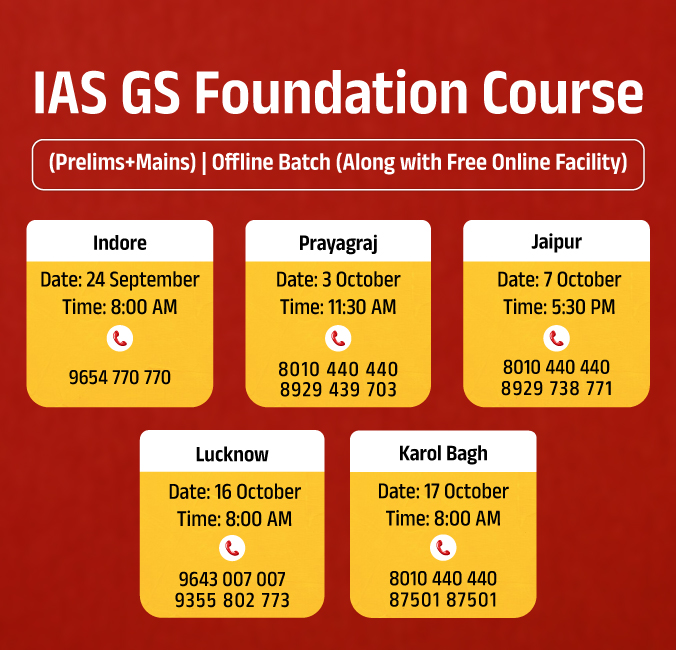
Biodiversity & Environment
India’s Biodiversity Target Under CBD
For Prelims: National Biodiversity Targets, Convention on Biological Diversity, Kunming-Montreal Global Biodiversity Framework, Invasive Alien Species, Fair and Equitable Sharing, Sustainable Development Goals, Marine Ecosystem, Coastal Ecosystem, Aichi Biodiversity Targets (2011-2020), Seagrass Meadows, Other Effective Area-Based Conservation Measures (OECMs).
For Mains: Significance of the Kunming-Montreal Global Biodiversity Framework, India’s biodiversity targets.
Why in News?
Recently, India plans to submit its National Biodiversity Targets to the United Nations Convention on Biological Diversity (CBD) aligning with the Kunming-Montreal Global Biodiversity Framework (KMGBF).
- Article 6 of CBD calls all parties to prepare national strategies, plans or programmes for conservation and sustainable use of biodiversity.
- India is expected to submit its 23 biodiversity targets at the 16th Conference of the Parties to the CBD (CBD-COP 16) at Cali, Colombia.
What is India’s Biodiversity Target Under CBD?
- Conservation Areas: Aiming for 30% of areas to be effectively conserved to enhance biodiversity.
- Invasive Species Management: Targeting a 50% reduction in the introduction and establishment of invasive alien species.
- Rights and Participation: Ensuring the participation and rights of indigenous peoples, local communities, women, and youth in biodiversity conservation efforts.
- Sustainable Consumption: Enabling sustainable consumption choices and reducing food waste by half.
- Benefit Sharing: Promoting fair and equitable sharing of benefits from genetic resources, digital sequence information, and associated traditional knowledge.
- Pollution Reduction: Committing to reduce pollution, halving nutrient loss and pesticide risk.
- Biodiversity Planning: Ensuring that all areas are managed to reduce the loss of regions of high biodiversity importance.
What is the Kunming-Montreal Global Biodiversity Framework (KMGBF)?
- About: It is a multilateral treaty aimed at halting and reversing biodiversity loss globally by 2030.
- It was adopted in December 2022 during the 15th meeting of the Conference of the Parties (CoP).
- It supports the Sustainable Development Goals (SDGs) and builds upon the achievements and lessons learned from the Strategic Plan for Biodiversity 2011–2020.
- Purpose and Goals: It ensures that by 2030 at least 30% of areas of degraded terrestrial, inland water, and marine and coastal ecosystems are under effective restoration.
- It has 23 action-oriented global targets for urgent action over the decade to 2030 which will enable achievement towards the outcome-oriented goals for 2050.
- It is important to note that this target refers to collective global efforts rather than a requirement for each country to allocate 30% of its land and water areas.
- Long-Term Vision: The framework envisions that by 2050, there will be a collective commitment to living in harmony with nature, serving as a foundational guide for current actions and policies on biodiversity conservation and sustainable use.
Development of National Biodiversity Targets (NBTs)
- Aichi Biodiversity Targets: In response to the CBD obligations, India has developed 12 national biodiversity targets (NBTs) that align with the previous Aichi Biodiversity Targets (2011-2020).
- National Biodiversity Action Plan (NBAP): It was originally created in 2008 and updated in 2014 to incorporate Aichi Biodiversity Targets.
- Monitoring: Associated indicators and monitoring framework has also been developed by India to provide a roadmap for achieving the NBTs.
How India Can Achieve the New Biodiversity Goals?
- Habitat Connectivity: India needs to prioritise the conservation of neglected ecosystems such as grasslands, wetlands, and seagrass meadows.
- Well-connected protected areas integrated into broader landscapes and seascapes can facilitate the movement of species and promote biodiversity.
- Mobilising Financial Resources: India should continue to advocate for financial support from developed nations to implement its national biodiversity action plans effectively.
- The GBF calls for developed countries to mobilise at least USD 20 billion annually by 2025 and USD 30 billion by 2030 for biodiversity initiatives in developing countries.
- Co-Management Models: Developing co-management frameworks that involve indigenous peoples and local communities in the conservation process can enhance the effectiveness of protected areas while maintaining community livelihoods.
- Integrating OECMs: Shifting focus from traditional protected areas to other effective area-based conservation measures (OECMs) allows for the conservation of biodiversity in areas with fewer restrictions on human activity.
- It includes supporting traditional agricultural systems and privately owned lands that contribute to conservation goals.
- Reforming Agricultural Subsidies: India should redirect support from harmful practices, such as pesticide use, to sustainable alternatives that promote ecosystem health.
- Alignment with Previous Targets: Building on the existing National Biodiversity Action Plan (NBAP) and aligning it with the new 23 targets of the GBF will create a cohesive strategy for biodiversity conservation in India.
Conclusion
India's commitment to the Kunming-Montreal Global Biodiversity Framework through its 23 biodiversity targets reflects a strategic approach to conserving ecosystems and enhancing community participation. By prioritising neglected habitats, mobilising resources, and reforming subsidies, India can effectively work towards achieving its biodiversity goals by 2030.
|
Drishti Mains Question: Discuss the significance of the Kunming-Montreal Global Biodiversity Framework (KMGBF) for global biodiversity conservation. |
UPSC Civil Services Examination Previous Year Question (PYQ)
Prelims
Q. With reference to ‘Global Environment Facility’, which of the following statements is/are correct?
(a) It serves as financial mechanism for ‘Convention on Biological Diversity’ and ‘United Nations Framework Convention on Climate Change’
(b) It undertakes scientific research on environmental issues at global level
(c) It is an agency under OECD to facilitate the transfer of technology and funds to underdeveloped countries with specific aim to protect their environment
(d) Both (a) and (b)
Ans: (a)
Q.“Momentum for Change: Climate Neutral Now” is an initiative launched by (2018)
(a) The Intergovernmental Panel on Climate Change
(b) The UNEP Secretariat
(c) The UNFCCC Secretariat
(d) The World Meteorological Organisation
Ans: (c)
Mains
Q. How is the Government of India protecting traditional knowledge of medicine from patenting by pharmaceutical companies? (2019)


Biodiversity & Environment
Living Planet Report 2024
For Prelims: World Wide Fund for Nature (WWF), Living Planet Report 2024, Zoological Society of London (ZSL), Tipping points, Brazilian Atlantic Forest, Sustainable Development Goals, Arctic Circle, Pollution.
For Mains: Threats to Biodiversity, Challenges and suggestive measures to ensure sustainable ecosystems.
Why in News?
According to the World Wide Fund for Nature (WWF)’s Living Planet Report 2024, there has been a catastrophic 73% decline in the average size of monitored wildlife populations in just 50 years (1970-2020).
- The highest decline was reported in freshwater ecosystems (85%), followed by terrestrial (69%) and marine (56%).
World Wildlife Fund for Nature
- It is the world’s leading conservation organization and works in more than 100 countries.
- It is an international non-governmental organization,established in 1961 and is headquartered at Gland, Switzerland.
- Its mission is to conserve nature and reduce the most pressing threats to the diversity of life on Earth.
- WWF collaborates at every level with people around the world to develop and deliver innovative solutions that protect communities, wildlife, and the places in which they live.
- World Wide Fund for Nature-India, commonly referred to as WWF-India, was established as a charitable trust in 1969.
- It operates through an autonomous structure, with its Secretariat located in New Delhi, along with multiple state, divisional, and project offices distributed across India.
What is the Living Planet Report and its Key Findings?
- About:
- The WWF utilises the Living Planet Index (LPI) to track average trends in wildlife populations. It monitors broader changes in species population sizes over time.
- The Living Planet Index, released by the Zoological Society of London (ZSL), monitors nearly 35,000 vertebrate populations across 5,495 species from 1970 to 2020.
- It acts as an early warning system for extinction risks and also helps evaluate the overall health and efficiency of ecosystems.
- The WWF utilises the Living Planet Index (LPI) to track average trends in wildlife populations. It monitors broader changes in species population sizes over time.
- Key Findings:
- Significant Population Declines: The steepest declines in monitored wildlife populations are recorded in Latin America and the Caribbean (95%), Africa (76%) and Asia–Pacific (60%) and in freshwater ecosystems (85%).
- Primary Threats to Wildlife: Habitat loss and degradation, is the most reported threat to wildlife populations around the world, followed by overexploitation, invasive species and disease.
- Indicators of Ecosystem Health: Declines in wildlife populations can act as an early warning indicator of increasing extinction risk and loss of healthy ecosystems.
- Damaged ecosystems become more vulnerable to tipping points which are pushed beyond a critical threshold toward potentially irreversible change.
- For example, a study in the Brazilian Atlantic Forest indicates that the loss of large fruit-eating animals has reduced seed dispersal for large-seeded trees, which affects carbon storage.
- The WWF warns that this phenomenon could lead to carbon storage losses of 2-12% across forests in Africa, Latin America, and Asia, diminishing their ability to store carbon amid climate change.
- Vulnerability of Damaged Ecosystems: There are global agreements and solutions to set nature on the path to recovery by 2030, but so far there has been limited progress, and urgency is lacking.
- More than half of the UN-mandated Sustainable Development Goals for 2030 are unlikely to meet their targets, with 30% already missed or worse than their 2015 baseline.
- Economic Impacts: Globally, over half of GDP (55%) is moderately or highly dependent on nature and its services.
- The report estimates that by 2050, the world would only need 0.84 of an Earth to sustain food production if India’s diet model were adopted worldwide.
- Threats to Biodiversity:
- Habitat Degradation and Loss: Deforestation, urbanization, and agricultural expansion are leading causes of habitat destruction. These activities fragment ecosystems, leaving species with less space and resources to survive.
- The Sacramento river winter-run Chinook salmon population decreased by 88% between 1950 and 2020, primarily due to dams disrupting their migratory routes.
- Overexploitation: Excessive hunting, fishing, and logging for commercial purposes are depleting wildlife populations faster than they can recover, pushing many species toward extinction.
- In Africa, poaching for the ivory trade has led to a 78-81% decline in forest elephant populations in Minkébé National Park from 2004 to 2014.
- Invasive Species: Non-native species introduced by humans often outcompete local species for resources, destabilising ecosystems and reducing biodiversity.
- Climate Change: Rising temperatures, shifting weather patterns, and extreme events are altering habitats, threatening species that cannot adapt quickly enough.
- Wildfires are becoming longer, with extreme fire events occurring more frequently, even reaching the Arctic Circle.
- Pollution: Industrial waste, plastic pollution, and agricultural runoff contaminated ecosystems, poisoning wildlife and disrupting the balance of natural processes.
- Critical Tipping Points: These refer to irreversible changes in ecosystems that, once crossed, lead to dramatic shifts.
- Coral Reef Bleaching: Mass coral die-offs could destroy fisheries and coastal protection, affecting millions of people.
- Amazon Rainforest: Continued deforestation could disrupt global weather patterns and release vast amounts of carbon, intensifying climate change.
- Greenland & Antarctic Ice Melt: Melting ice sheets would lead to significant sea level rise, impacting coastal regions globally.
- Ocean Circulation: The collapse of ocean currents could alter weather in Europe and North America.
- Permafrost Thaw: Large-scale thawing could release vast amounts of methane and carbon, accelerating global warming.
- Habitat Degradation and Loss: Deforestation, urbanization, and agricultural expansion are leading causes of habitat destruction. These activities fragment ecosystems, leaving species with less space and resources to survive.
What are the Challenges Related to Conservation of Biodiversity?
- Conflicting Priorities: Balancing conservation with economic growth can be challenging, especially in developing nations where short-term economic gains often take precedence over long-term ecological sustainability.
- Resource Allocation: Limited financial resources and competing budget priorities make it difficult for governments to invest in large-scale biodiversity conservation efforts while addressing pressing social needs.
- Agricultural Expansion: Meeting food security goals can conflict with habitat protection, as land for agriculture encroaches on ecosystems, particularly in biodiversity hotspots.
- Issue in Energy Transition: Shifting to renewable energy can impact ecosystems through land-use changes (e.g., solar farms, wind turbines), creating trade-offs between environmental protection and energy needs.
- Policy and Enforcement Gaps: Weak institutional frameworks and inconsistent enforcement of environmental regulations at both global and national levels hinder effective biodiversity protection, allowing unsustainable practices to continue unchecked.
Way Forward
- Scaling up Conservation Efforts: Increase and improve the effectiveness of conservation initiatives by expanding protected areas, restoring degraded ecosystems, and supporting Indigenous Peoples in conservation efforts.
- Transforming Food Systems: Adopt sustainable agricultural practices, reduce food waste, and promote plant-based diets to lessen the environmental impact of food production on biodiversity.
- Energy Transition: Accelerate the shift to renewable energy sources while ensuring minimal harm to ecosystems, reducing dependency on fossil fuels, and limiting climate change impacts.
- Finance System Reform: Redirect financial investments away from harmful industries toward nature-positive and sustainable activities, ensuring long-term environmental benefits.
- Global Cooperation: Foster stronger international collaboration on biodiversity protection, aligning climate, nature, and development policies to achieve global sustainability goals.
|
Drishti Mains Question: Discuss the major threats to biodiversity and suggest transformative solutions to ensure sustainable ecosystems for future generations. |
UPSC Civil Services Examination, Previous Year Question (PYQ)
Prelims:
Q. Consider the following statements: (2018)
- The definition of “Critical Wildlife Habitat” is incorporated in the Forest Rights Act, 2006.
- For the first time in India, Baigas have been given Habitat Rights.
- Union Ministry of Environment, Forest and Climate Change officially decides and declares Habitat Rights for Primitive and Vulnerable Tribal Groups in any part of India.
Which of the statements given above is/are correct?
(a) 1 and 2 only
(b) 2 and 3 only
(c) 3 only
(d) 1, 2 and 3
Ans: (a)
Mains:
Q. What are the consequences of Illegal mining? Discuss the Ministry of Environment and Forests’ concept of GO AND NO GO zones for coal mining sector. (2013)


International Relations
Terror Groups in the Middle East
For Prelims: Hezbollah, Middle east, Iran-Iraq War, Islamic State of Iraq and the Levant (ISIL), Kurds.
For Mains: Militant groups in the Middle East, India’s stand on these groups, India’s foreign policy towards key Middle Eastern countries.
Why in News?
Recently, Israel attacked the Hezbollah which is one of the militant groups fighting in the middle east. This attack brought several militant groups of the middle east into limelight.
What are the Various Terror Groups of the Middle East?
- Hizbollah
- About:
- It is a Shiite Muslim political party and militant organisation located in Lebanon, known for operating as “a state within a state.” Its paramilitary wing, the Jihad Council, commands the most powerful armed force in Lebanon.
- Hizballah’s Islamic Jihad Organization (IJO), also referred to as the External Security Organization or Unit 910, is a highly compartmentalised unit responsible for conducting overseas terrorism operations, particularly against Western targets.
- Hizballah identifies Israel and the United States as its primary adversaries and has been involved in operational activities within its homeland.

- Aim:
- Hizballah possesses state-like military capabilities, including air defense systems, missiles, precision-guided missiles, rockets, and unmanned aircraft systems.
- The group is dedicated to maintaining its strategic partnership with Iran, supporting the Syrian regime, and consolidating its power within Lebanon while opposing Israeli interests and striving to expel US forces from the Middle East.
- Since its inception it aimed to eliminate the state of Israel.
- Territory of Influence:
- United Nations Stand:
- The UN considers Hezbollah a terrorist organisation and a major threat due to its military capabilities and involvement in both regional conflicts and global terrorism.
- About:
- Badr Organization
- About:
- It is an Iraqi Shia Islamist and Khomeinist political party and paramilitary group.
- Originally known as the Badr Brigades or Badr Corps, the organization was formed in 1982 as the military wing of the Supreme Council for Islamic Revolution in Iraq (SCIRI), a Shia Islamic party based in Iran.
- Aim:
- The Badr Brigade was established with the support of Iranian intelligence and Shia cleric Mohammad Baqir al-Hakim, with the primary objective of opposing Saddam Hussein's Ba'athist regime during the Iran-Iraq War.
- After the 2003 US-led invasion of Iraq, a large portion of Badr Brigade fighters joined the Iraqi army and police forces, becoming an integral part of Iraq’s security apparatus.
- The Badr Organization gained prominence again in 2014 due to its active involvement in combating the Islamic State of Iraq and the Levant (ISIL) as part of the Popular Mobilization Forces (PMF).
- Its role within Iraq’s paramilitary framework has been significant, contributing to national security, particularly through their association with the PMF, which operates under the Iraqi government’s oversight .
- Territory of Influence:
- Baghdad and Southern Iraq.
- United Nations Stand:
- The UN views the Badr Organization as destabilizing due to its Iranian links, sectarian violence, and negative impact on Iraq's governance and regional stability.
- About:
- Islamic State of Iraq and ash-Sham (ISIS)
- About:
- ISIS is a Salafi-jihadist group responsible for numerous terrorist attacks worldwide, resulting in thousands of deaths and injuries.
- In 2004, an Iraqi extremist network led by Abu Musab al-Zarqawi merged with al-Qa‘ida to form al-Qa‘ida in Iraq (AQI), which Zarqawi led until his death in 2006.
- In 2010, Abu Bakr al-Baghdadi took over the group and expanded its operations into eastern Syria by 2011.
- In 2013, AQI rebranded itself as ISIS, and in 2014, the group severed ties with al-Qa‘ida, declaring itself a caliphate while seizing significant territory in Iraq and Syria.
- In 2019, an international coalition expelled ISIS from its last stronghold in Syria, but the group continues to operate covertly in both Syria and Iraq.
- Aim:
- ISIS employs a variety of tactics, including targeted killings, IED attacks, ambushes, military-style assaults, kidnappings, and suicide bombings in Iraq and Syria.
- The group encourages its followers worldwide to carry out operations in their own countries using easily accessible weapons.
- The organization primarily targets military forces and civilian defense groups in Iraq and Syria.
- ISIS frequently attacks government personnel and infrastructure, as well as foreign aid workers and civilians perceived to be opposing its ideology or interpretation of Islamic law.
- Territory of Influence:
- United Nations Stand:
- The UN has labelled ISIS a terror organisation and a global threat, condemning its brutal violence and numerous casualties.
- India’s Stand:
- India categorically condemns and banned ISIS and organisations affiliated with it.
- About:
- Boko Haram
- About:
- Boko Haram seeks to eliminate Western influence and establish a Salafi-Islamist state in its area of operations.
- Since its formation in 2002, Boko Haram has been responsible for an estimated 50,000 deaths and the displacement of over 2.5 million people.
- The group was previously affiliated with al-Qa‘ida and ISIS but currently operates independently of both.
- After 2021, many members defected to ISIS–West Africa or surrendered to local authorities.
- Aim:
- Boko Haram frequently employs small arms to carry out attacks against civilians and regional security forces.
- The group conducts kidnappings to secure ransoms and gain access to medical services.
- It has utilized untrained kidnapping victims, including women and children, as suicide bombers.
- Territory of Influence:
- Northeast Nigeria and southeast Niger, also conducts operations in Cameroon and Chad.
- United Nations Stand:
- Boko Haram is recognized by the UN as a terrorist organisation.
- About:
- Kurdistan Workers' Party (PKK)
- About:
- The Kurdistan Workers’ Party (PKK), also known as Kongra-Gel, is a militant Marxist-Leninist Kurdish separatist organisation founded in 1978 with the aim of establishing a unified, independent Kurdistan.
- The PKK seeks to control Kurdish regions in Iran, Iraq, Syria, and Turkey to promote Kurdish rights and recognition.
- The group’s stated objective is to create a confederation of semi autonomous Kurdish regions.
- Historically, the PKK has based its headquarters in Iraq and primarily targeted Turkish interests in the Kurdish-majority southeastern region of Turkey.
- Turkish security forces in southeastern Turkey have driven most of the PKK’s activities into Iraq and Syria.
- Aim:
- The PKK employs a combination of guerrilla warfare and terrorist tactics in its operations.
- The group utilizes a range of weapons and methods, including IEDs, car bombs, grenades, small arms, mortars, suicide bombings, and kidnapping operations.
- The PKK conducts attacks primarily against Turkish and Turkish-supported forces in northern Iraq and Syria, as well as Turkish personnel and infrastructure in southeastern Turkey.
- The group also employs unmanned aerial vehicles and man-portable air defense systems in its assaults.
- Territory of Influence:
- United Nations Stand:
- The UN has addressed the PKK’s actions as part of broader counter-terrorism discussions, recognizing its militant activities primarily against Turkish interests .
- The group is often viewed within the context of regional instability and its implications for Turkey's security policies .
- India’s Stand:
- India does not have a specific policy targeting the PKK. However, it recognizes the challenges posed by separatist movements.
- About:
|
Drishti Mains Question: Discuss how militant organisations in Middle East are a threat to regional peace and security? |
UPSC Civil Services Examination, Previous Year Question (PYQ)
Prelims:
Q.‘Hand-in-Hand 2007’ a joint anti-terrorism military training was held by the officers of the Indian Army and officers of Army of which one of the following countries? (2008)
(a) China
(b) Japan
(c) Russia
(d) USA
Ans: (a)
Mains
Q. Terrorist activities and mutual distrust have clouded India-Pakistan relations. To what extent the use of soft power like sports and cultural exchange could help generate goodwill between the two countries.Discuss with suitable examples. (2015)


Important Facts For Prelims
Nobel Peace Prize 2024
Why in News?
The 2024 Nobel Prize for Peace has been awarded to Nihon Hidankyo, a Japanese organisation of survivors of the Hiroshima-Nagasaki bombings for its “efforts to achieve a world free of nuclear weapons”.
- The Nobel Peace Prize for 2023 was awarded to the Iranian human rights advocate Narges Mohammadi, who belonged to a minority group.
- She was awarded for her fight against the oppression of women in Iran and her fight to promote human rights and freedom for all.
Nihon Hidankyo
- Founded on 10th August 1956, it is composed of survivors from the atomic bombings in Hiroshima and Nagasaki conducted by the United States in 1945.
- The survivors, referred to as “Hibakusha” or “bomb-affected people,” played a pivotal role in leading the global movement aimed at abolishing nuclear weapons.
What was the Nuclear Attack on Japan?
- On 6th August 1945, the United States dropped “Little Boy” on Hiroshima, resulting in catastrophic destruction.
- More than 70,000 individuals died instantly, with the total death toll later exceeding 100,000.
- On 9th August 1945, before the full extent of Hiroshima's destruction could be grasped, the US dropped “Fat Man” on Nagasaki, resulting in at least 40,000 immediate deaths and tens of thousands more in the following days and weeks.
- Japanese Emperor Hirohito announced Japan's surrender on 15th August. In his speech, he warned that continuing the fight would lead to “the ultimate collapse and obliteration of the Japanese nation” and could result in “the total extinction of human civilization.”
How does Hibakusha Advocate for Nuclear Disarmament?
- The United States' decision to drop the atomic bombs has faced criticism from both strategic and ethical viewpoints due to its significant human cost.
- The bombings altered the global landscape, prompting major powers to race to develop their own nuclear arsenals as a deterrent against the United States.
- In response to this nuclear arms race, a global movement for nuclear disarmament emerged, with the Hibakusha playing a vital role in advocating for disarmament.
- Nihon Hidankyo claims to be “the only nation-wide organisation of A-bomb survivors of Hiroshima and Nagasaki.”
- Their primary objectives include promoting the welfare of Hibakusha, advocating for the elimination of nuclear weapons, and seeking due compensation for victims.
- The organisation has focused on sharing the experiences of the Hibakusha to raise awareness about the damage and after-effects of the atomic bombings, both in Japan and internationally.
- The Nobel citation noted their efforts to send A-bomb survivors to the United Nations, nuclear-armed states, and other countries to share their stories.
- Organisations like Nihon Hidankyo have contributed to establishing a nuclear taboo, which has prevented the use of nuclear weapons since 1945.
Other Organisation/Individuals Awarded for Nuclear Disarmament
- Since 1901, several Nobel Peace Prizes have been awarded for efforts in disarmament.
- Former Japanese Prime Minister Eisaku Sato was a recipient in 1974, recognized for Japan's commitment to its non-nuclear weapons policy.
- The most recent Nobel Peace Prize, awarded in 2017 to the International Campaign to Abolish Nuclear Weapons (ICAN) for its efforts to highlight the catastrophic humanitarian consequences of nuclear weapon use and for its pioneering work toward a treaty to prohibit such weapons.
- ICAN has collaborated with Nihon Hidankyo to document the effects of nuclear weapons.
Other Nobel Prize 2024
- Literature: South Korean author Han Kang
- Physics: John J. Hopfield and Geoffrey E. Hinton
- Physiology or Medicine: Victor Ambros and Gary Ruvkun
- Chemistry: David Baker, Demis Hassabis and John M. Jumper
UPSC Civil Services Examination, Previous Year Questions (PYQ)
Q. Who among the following scientists shared the Nobel Prize in Physics with his son? (2008)
(a) Max Planck
(b) Albert Einstein
(c) William Henry Bragg
(d) Enrico Fermi
Ans: (c)


Important Facts For Prelims
19th East Asia Summit (EAS)
Why in News?
Recently, the Prime Minister of India attended the 19th East Asia Summit (EAS) in Vientiane, Lao PDR.
What are the Key Highlights of the Visit?
- PM advocated for a development-oriented Indo-Pacific approach over expansionism.
- Reiterated support for Nalanda University and invited EAS members to the Heads of Higher Education Conclave.
- Addressed global challenges like terrorism, cyber, and maritime threats, and stressed dialogue-based conflict resolution.
- PM conveyed his wishes to Malaysia on presiding as the new Chair of ASEAN and expressed India’s full support to it. The present chair of ASEAN is Lao PDR.
What is the East Asia Summit (EAS)?
- Establishment: The EAS was established in 2005 as an Association of Southeast Asian Nations (ASEAN)-led initiative.
- The EAS is the only leader-led forum in the Indo-Pacific that brings together all key partners to discuss political, security and economic issues of strategic importance.
- The idea of an East Asia Grouping was first proposed by then Malaysian Prime Minister Mahathir Mohamad in 1991.
- The first summit was held in Kuala Lumpur, Malaysia on 14th December 2005.
- Objectives: The EAS operates on the principles of openness, inclusiveness, respect for international law, ASEAN centrality, and ASEAN’s role as the driving force.
- Members: The EAS is a key forum for strategic dialogue in the Indo-Pacific region, involving 18 countries, including ASEAN members.
- The EAS comprises 18 members, the 10 ASEAN countries (Brunei, Cambodia, Indonesia, Laos, Malaysia, Myanmar, Philippines, Singapore, Thailand, and Vietnam) and eight dialogue partners (Australia, China, India, Japan, New Zealand, Republic of Korea, Russia and the United States).
- Importance:
- Economically: In 2023, EAS members represented approximately 53% of the world's population and accounted for approximately 60% of global GDP.
- India is ASEAN’s seventh-largest trading partner, while ASEAN is India’s fourth-largest partner. In the last ten years India-ASEAN trade had doubled to over USD 130 billion.
- Strategically: Connectivity projects in Southeast Asian countries, both infrastructure and digital, are key to India’s Act East Policy, with major initiatives like the India-Myanmar-Thailand Highway and Kaladan Multi-Modal Transit Transport boosting regional links and coonctivity with Eas Asian Nations.
- Besides, India also engages in capacity-building through the Indian Technical and Economic Cooperation (ITEC) programme with Southeast Asian countries like Cambodia, Laos, and Vietnam.
- Culturally: Buddhism, a major cultural and religious tradition that connects many Southeast Asian and East Asian nations, originated in India.
- Restoration of Nalanda University and support for the International Buddhist Confederation, enhance India's spiritual and cultural ties with Myanmar, Thailand, and Cambodia, showcasing its commitment to promoting Buddhist traditions.
- Economically: In 2023, EAS members represented approximately 53% of the world's population and accounted for approximately 60% of global GDP.
UPSC Civil Services Examination, Previous Year Questions (PYQs)
Prelims
Q. India is a member of which among the following? (2015)
- Asia-Pacific Economic Cooperation
- Association of South-East Asian Nations
- East Asia Summit
Select the correct answer using the code given below:
(a) 1 and 2 only
(b) 3 only
(c) 1, 2 and 3
(d) India is a member of none of them
Ans: (b)
Q. Consider the following countries: (2018)
- Australia
- Canada
- China
- India
- Japan
- USA
Which of the above are among the ‘free-trade partners’ of ASEAN?
(a) 1, 2, 4 and 5
(b) 3, 4, 5 and 6
(c) 1, 3, 4 and 5
(d) 2, 3, 4 and 6
Ans: (c)
Q. The term ‘Regional Comprehensive Economic Partnership’ often appears in the news in the context of the affairs of a group of countries known as (2016)
(a) G20
(b) ASEAN
(c) SCO
(d) SAARC
Ans: (b)


Rapid Fire
First IPS Officer to Win Gold at Commonwealth Powerlifting
In an extraordinary accomplishment, IPS officer Anita Roy, the Senior Superintendent of Police (SSP) in Puducherry, has become the first IPS officer to secure a gold medal at the Commonwealth International Classic Bench Press Competition, 2024.
- About:
- The championships took place in Sun City, South Africa in October 2024.
- It is organised by the Commonwealth Powerlifting Federation and is affiliated with the International Powerlifting Federation.
- Its aim is to foster and promote high-quality, drug-free powerlifting events at the Commonwealth International level.
- The International Powerlifting Federation (IPF):
- It is the global governing body for the sport of powerlifting. Established in 1972, the IPF includes member federations from over 100 countries.
- It is officially recognized by the General Association of International Sports Federations.
Read More: Formation of Powerlifting Association in Palamu


Rapid Fire
Difficulties in Increasing Life Expectancy
A new study titled "Implausibility of Radical Life Extension in Humans in the Twenty-First Century" reveals that the steady rise in life expectancy driven by medical and technological advancements is now slowing down.
- About the study:
- Researchers examined life expectancy at birth data from 1990 to 2019, focusing on regions with the highest life expectancy, such as Australia, France, South Korea, Spain, Sweden, and Switzerland.
- Key Findings:
- The study suggests that the life expectancy in the longest-living regions increased by only 6.5 years between 1990 and 2019.
- There is a need for groundbreaking new medicines that can slow the ageing process, rather than simply enhancing treatments for widespread fatal conditions like heart attacks and cancer.
- Current estimates indicate that girls have a 5.3% chance, and boys have a 1.8% chance, of reaching 100 years of age in those regions.
- However, even if common diseases are eradicated, the decline of organs due to ageing continues to limit significant lifespan extension.
- Several drugs are being tested to extend lifespan, including metformin, a low-cost diabetes drug, which has been shown to slow ageing in male monkeys.
- The study suggests that the life expectancy in the longest-living regions increased by only 6.5 years between 1990 and 2019.
Read more: Human Development Report 2023-24


Rapid Fire
Hizb Ut-Tahrir Banned
Recently, the Ministry of Home Affairs (MHA) banned Hizb-Ut-Tahrir under section 35 of the Unlawful Activities Prevention Act, 1967 (UAPA).
- It was engaged in acts of terror, including radicalising gullible youth to join terrorist organisations and fund their activities.
- They hold ‘Dawah' gatherings (Islamic outreach or proselytisation) to persuade naive youth to commit terrorist acts.
- It aims to establish an Islamic state and caliphate globally, including in India, through jihad and terrorist activities.
- Section 35 of the UAPA, 1967 empowers the government to declare an organisation as unlawful if it engages in activities promoting terrorism or secession.
- Hizb-Ut-Tahrir is an international Islamic organisation formed in Jerusalem in 1953.
- It is headquartered in Lebanon and it operates in at least over 30 countries including the United Kingdom, the United States, Canada and Australia.
- It became the 45th outfit to be banned in India Jaish-e-Mohammad and Laskar-e-Toiba.
Read More: UAPA Tribunal Upholds Centre's Decision to Ban PFI


Rapid Fire
World Mental Health Day 2024
On 10th October, World Mental Health Day (WMHD) 2024 was observed, bringing attention to the recent workplace suicides that highlight the significant impact of job-related stress on mental health, even among those who appear outwardly successful.
- Theme of WMHD 2024: Mental Health at Work.
- Background: WMHD was first initiated in 1992 by the World Federation for Mental Health (WFMH).
- WMHD, organized by the WHO, aims to raise awareness, promote mental health education, and combat stigma, emphasizing the importance of mental well-being for individuals and communities
- Examples of mental illness include depression, anxiety disorders, schizophrenia, eating disorders and addictive behaviours.
- Statistics: The Economic Survey 2023-24 emphasizes the need to increase the number of mental health professionals and improve mental health services.
- According to the National Mental Health Survey (NMHS) 2015-16, 10.6% of Indian adults experienced mental disorders, with a treatment gap of 70% to 92% across various conditions.
- Government Initiatives:
- Policy Recommendations on Mental Health:
- Enhancing efforts to raise the number of psychiatrists from 0.75 to the WHO standard of 3 per lakh population.
- Sensitization of mental health at the preschool, Anganwadi level to provide precious early identification of disorders.
Read More: Mental Health Initiatives in India



